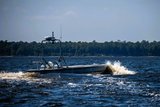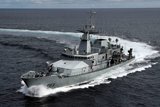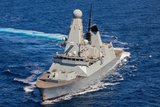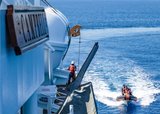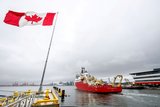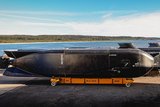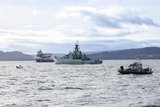Construction of Australia’s third Arafura-class OPV begins in WA
The construction of the third Arafura-class OPV for the Royal Australian Navy (RAN) has begun at the Civmec shipyard in Henderson, Western Australia.
It is the first ship to be built in the state.
A total of 12 Arafura-class vessels are to be manufactured as part of the Department of Defence’s A$90 billion Continuous Naval Shipbuilding Programme.
The first ship is due to commence active service by 2022 and the programme is currently on schedule, according to Minister of Defence Linda Reynolds.
‘This government’s investment in Australia’s naval shipbuilding programme demonstrates our commitment to strong border protection over greater distances than is currently possible and our commitment in the local economic and creating more jobs for Australian workers,’ she added.
Gradually, the Arafura class will replace the existing Armidale-class and Cape-class patrol boats that entered active service with the RAN in 2005.
Related Equipment in Defence Insight
More from Naval Warfare
-
![MBDA-led DragonFire’s latest trials move the LDEW system closer to UK Navy integration]()
MBDA-led DragonFire’s latest trials move the LDEW system closer to UK Navy integration
The DragonFire lines up with other European laser-directed energy weapons being developed in collaboration with MBDA.
-
![US Coast Guard pursues solutions to increase maritime domain dominance]()
US Coast Guard pursues solutions to increase maritime domain dominance
The USCG is seeking technologies, services and applications to better connect its assets and speed up the decision-making process.
-
![Canadian Coast Guard’s OOSV delivery is “major milestone” in fleet modernisation]()
Canadian Coast Guard’s OOSV delivery is “major milestone” in fleet modernisation
The Polar Class 6 platform is the largest CCG science-dedicated vessel and will operate on the country’s east coast.
-
![How the Anduril-HHI autonomous ship plan fits in with the US Navy’s MASC programme]()
How the Anduril-HHI autonomous ship plan fits in with the US Navy’s MASC programme
The new modular vessel is expected to be developed for both commercial and defence use, with a heavy focus on production speed and mission flexibility.
-
![Indo Pacific 2025: Autonomous systems reigned but can the Australian Defence Force afford it?]()
Indo Pacific 2025: Autonomous systems reigned but can the Australian Defence Force afford it?
Multiple autonomous systems and technologies were on display at this year’s Indo Pacific, but questions remain over how the Australian Department of Defence will balance the books.
-
![How the UK Royal Navy is powering up its hybrid fleet to combat new threats]()
How the UK Royal Navy is powering up its hybrid fleet to combat new threats
Since it announced its move towards a new “hybrid navy” earlier this year, the force has announced a number of new uncrewed technologies in the works.








